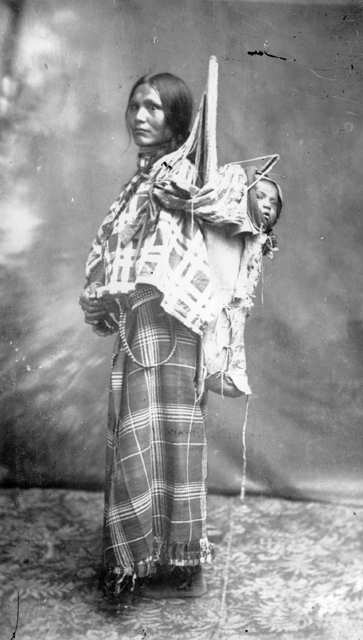Sacajawea was a Shoshone Native American who lived between the years of 1788–1812. She was married at the age of 13 and became a mother at the age of 17. Less than two months after the birth of her son, she set off in 1805 to guide the Lewis and Clark expedition, trekking over 3,700 miles with her infant strapped to her back.
At the time, the diets of pregnant Shoshone women consisted of raw bone marrow, which they believed helped the baby develop healthy blood in the womb. They also ate raw brain to aid the growth and development of the baby’s brain—providing infants with high intelligence would help them survive the environment.
The Shoshone typically nursed for two years. The baby’s first solid foods consisted of raw bone marrow, followed by boiled meat—first chewed into a mush by mother, spit out, then mixed with raw bone marrow or raw brain to feed the baby.
The newborn diet of today typically consists of either breastfeeding or formula. The chart below compares the two. How do modern prenatal dietary standards compare to that of Sacajawea’s?
| Formula | Breastfeeding |
| No DHA | Rich in brain building Omega-3 and DHA AA |
| Doesn’t adjust to infant’s needs | Automatically adjusts to baby’s needs |
| No cholesterol | Rich in cholesterol |
| Not completely absorbed | Nearly completely absorbed |
| No lipase | Contains fat digesting lipase |
| Proteins | |
| Hard to digest casein | Easily digestible whey |
| Not completely absorbed | Absorbed more completely |
| No lactoferrin | Lactoferrin for intestinal health |
| No lysozyme | Lysozyme-an antimicrobial |
| Low in brain building proteins | High in brain building proteins |
| Lacks-sleep inducing proteins | High in sleep-inducing proteins |
| Carbohydrates | |
| No oligosaccharides | Rich in oligosaccharides (increase GI health) |
| Immune Boosters | |
| No live white blood cells | Millions of living white blood cells |
| Has no immune benefit | Rich in immunoglobulins |
| Infants are not allergic to human milk proteins. | |
The newborn diet from the past greatly varies from the newborn diet of the present, which is clearly inadequate. Standard Process whole-food supplements, made under strict holistic guidelines, can provide newborns with nutrients they may be lacking. These recommended whole-food supplements include:
Life Nourishing Triad for Mother and Baby:
Contains a Protomorphogen extract that supports the growth and function of a healthy central nervous system for mother and baby. (Three per day.)
Calcifood Wafers or Calcifood Powder
Aids the formation of blood, bones, and teeth. This veal bone source of calcium, phosphorus, proteins, and enzymes supports mother and fetus, as well as a nursing infant. (Six wafers or three teaspoons per day.)
Supports vitamin A and D and omega-3 fatty acids. Vitamin D deficiency in pregnant women is thought to be a contributing factor to autism. Vitamin D receptors increase nerve formation and growth during fetal development. (Three perles per day.)
Photo credit: http://castle.eiu.edu/~wow/saccont.htm



It wouldn’t hurt to point out, in spite of your source for the picture on a Sacajawea page, that this is not Sacajawea. It should be pretty obvious considering her year of death, but common sense is dead these days.
You’re right! No photos or images exist of Sacajawea. So glad that’s what you got out of Dr. Dority’s article. http://www.lewis-clark.org/article/386